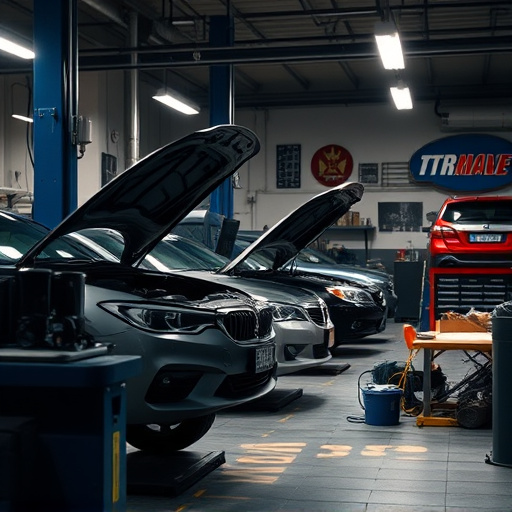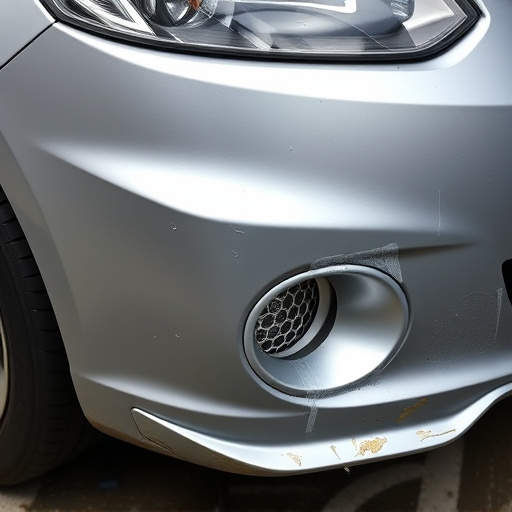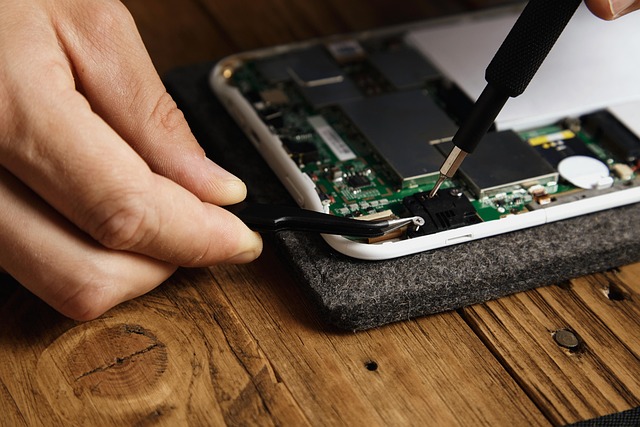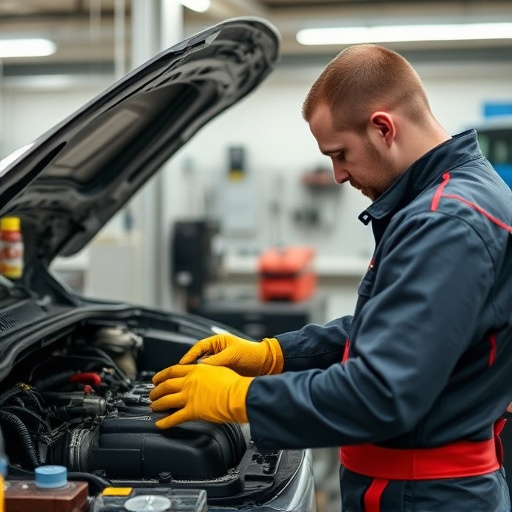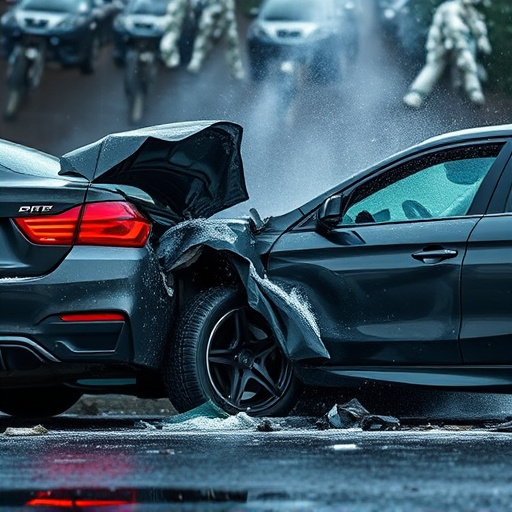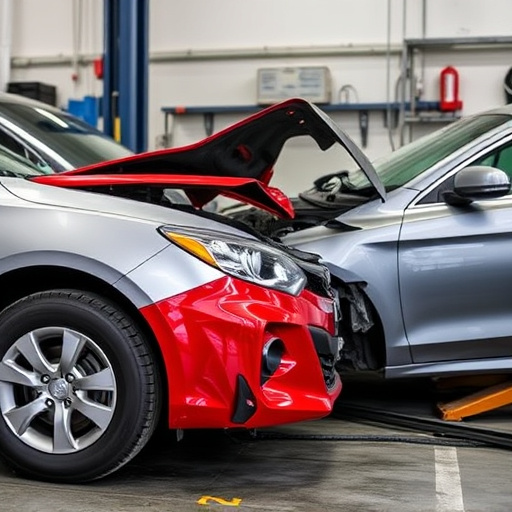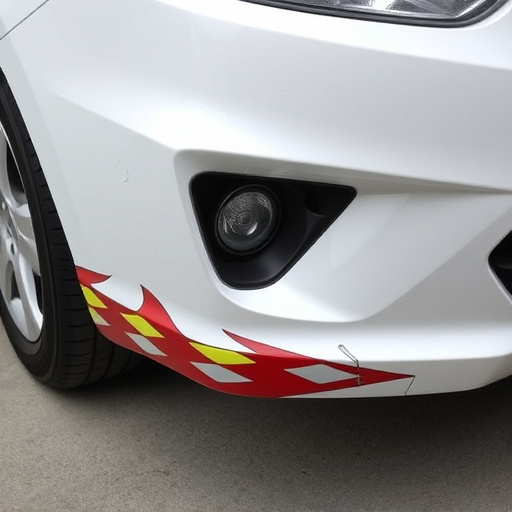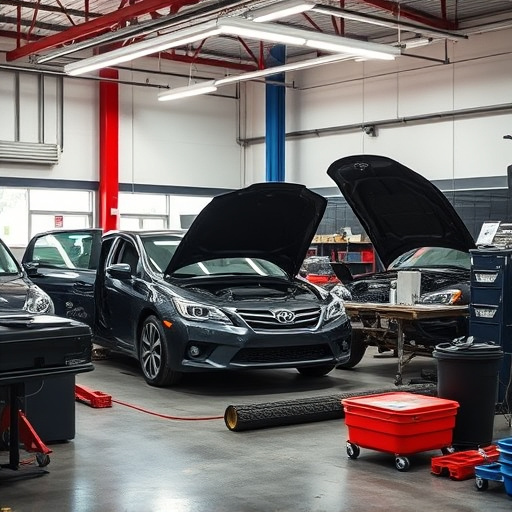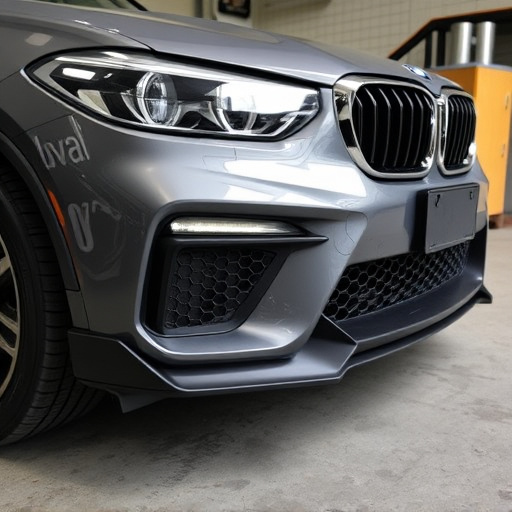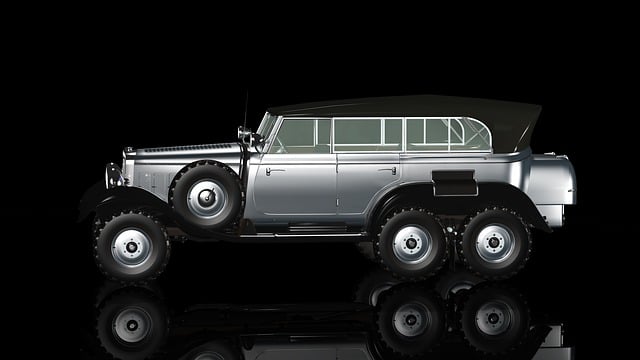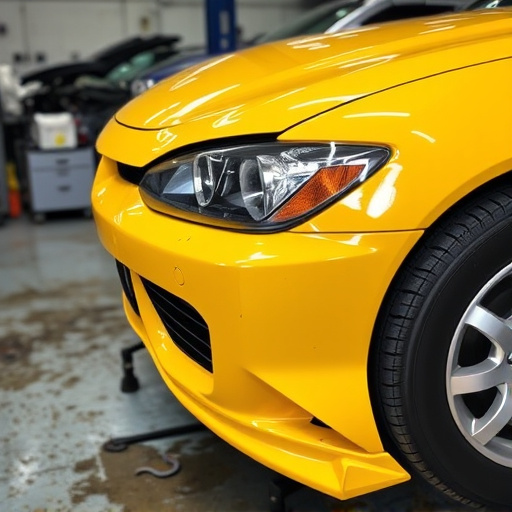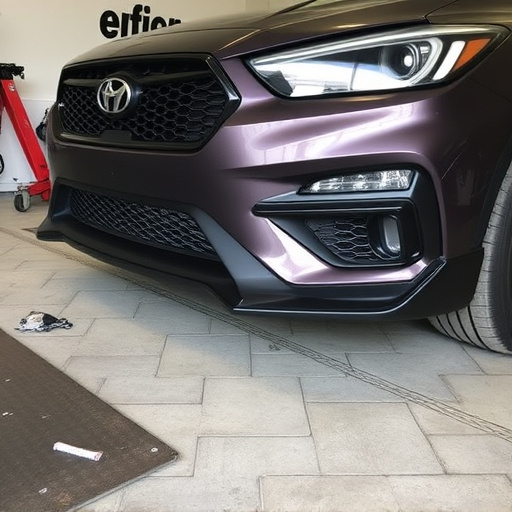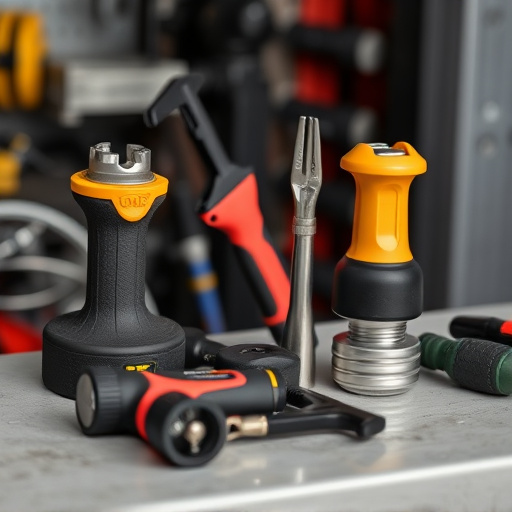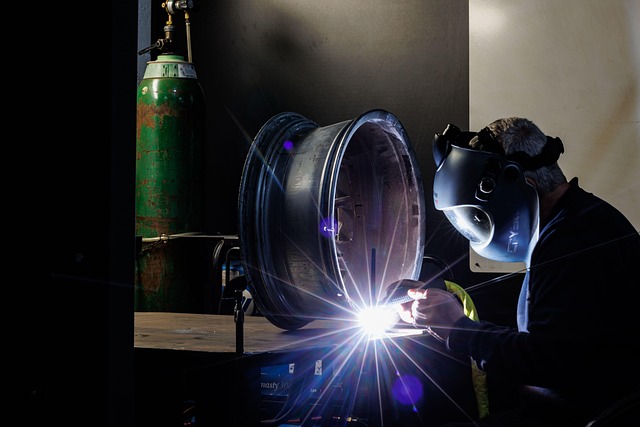Implementing a four-stage paint system requires thorough surface preparation to remove dirt and debris, sand for enhanced adhesion, and integrated tire services. Primer and base coat application create a strong foundation, with primer filling imperfections for a smooth base. Advanced color matching using CAD software ensures precise restoration, especially crucial for luxury vehicles where paint composition is adjusted to industry standards.
In the realm of collision repair, achieving flawless results demands a meticulous approach. The four-stage paint system is a game-changer, ensuring superior quality and long-lasting protection. This comprehensive guide delves into the essential steps: Prepare, Apply, Mix, and Finish. From surface cleaning techniques to color matching strategies, each stage requires precision and expertise. Master these steps, and you’ll deliver top-tier repairs that stand the test of time.
- Prepare: Surface Cleaning and Preparation Techniques
- Apply: Primer and Base Coat for Optimal Adhesion
- Mix: Color Matching and Customization Strategies
Prepare: Surface Cleaning and Preparation Techniques
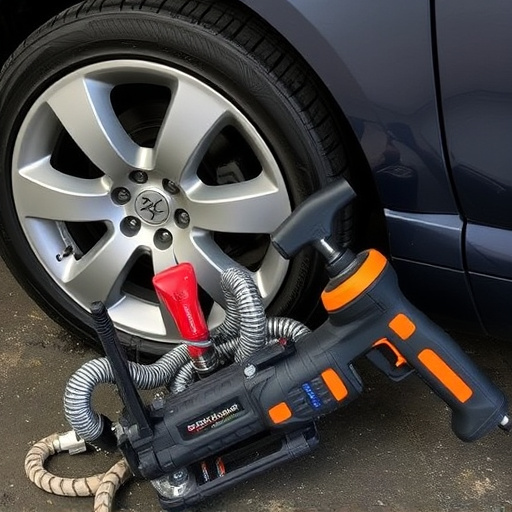
Before diving into the four-stage paint system, a thorough preparation of the auto collision center’s surface is paramount. This involves meticulous cleaning to remove any dirt, grease, or debris from the damaged area. Collision repair professionals should employ high-quality solvents and degreasers suitable for the task, ensuring they adhere to safety protocols. Once the surface is clean, it’s crucial to roughen the area slightly using appropriate sanding techniques. This step primps the panel for optimal paint adhesion, which is a critical aspect of successful autobody repairs.
Additionally, tire services might play a role in this stage if the damage extends to the wheel areas. Proper preparation ensures that once the paintwork is completed, the vehicle will not only look as good as new but also perform seamlessly on the road. These surface cleaning and preparation techniques are foundational to achieving precise, long-lasting results in any auto collision center.
Apply: Primer and Base Coat for Optimal Adhesion
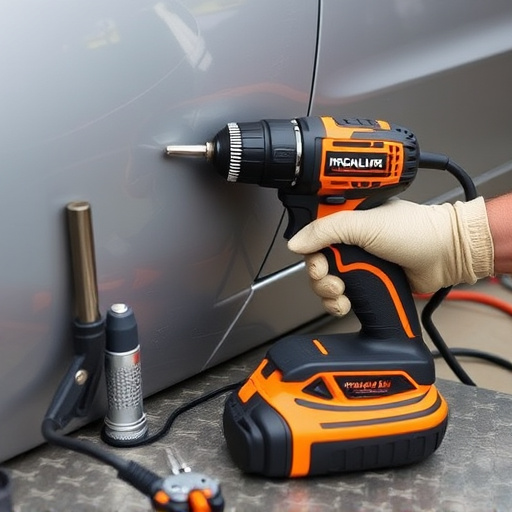
In the context of a four-stage paint system designed for collision repair professionals, the application of primer and base coat is a critical step. This dual layer serves as the foundation for superior adhesion, ensuring that the final topcoat bonds securely to the vehicle’s surface. The primer acts as a bridge, filling in imperfections and preparing the metal for the base coat, which further enhances smoothness and creates an ideal canvas for color accuracy.
For collision centers and automotive body shops aiming for high-quality repairs, this two-step application is non-negotiable. It not only facilitates easier paint removal during future maintenance but also guarantees that repairs are discreet and long-lasting. The strategic use of these intermediate coats forms a robust barrier against moisture, corrosion, and other environmental factors, ensuring the longevity of the vehicle’s restored appearance.
Mix: Color Matching and Customization Strategies
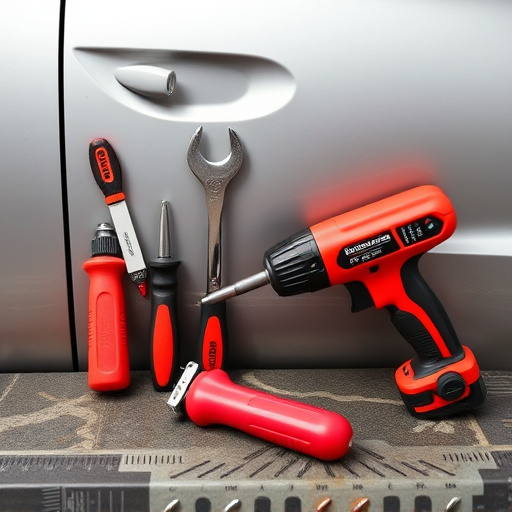
In the mix stage of a four-stage paint system, collision repair professionals employ advanced color matching and customization strategies to ensure precise restoration. This involves meticulous use of computer-aided design (CAD) software and state-of-the-art color scanners to accurately identify and replicate the exact shade of the vehicle’s original paint. By comparing the damaged area with the car’s existing color profile, technicians can create a customized mix that matches not just the hue but also the luster and texture, resulting in a seamless finish.
For luxury vehicle repairs at a collision repair center or car body shop, this attention to detail is paramount. Customization goes beyond basic color matching; it includes adjusting the paint’s composition to match the unique specifications of each vehicle. This involves manipulating factors such as pigment load, resin content, and additives to achieve the perfect blend that not only matches the original but also enhances the car’s overall appearance, ensuring a superior finish that meets or exceeds industry standards.
A successful collision repair process hinges on a meticulous four-stage paint system. By mastering surface preparation, applying the right primers and base coats for superior adhesion, skillfully mixing color matches, and following these proven steps, professionals can achieve not only structural integrity but also aesthetic excellence in every repair job. This systematic approach ensures durable, visually appealing finishes that satisfy both customers and auto body experts alike.
